
Every year, under some of the darkest skies the UK has to offer, star seekers cluster together in North Yorkshire’s National Parks for the Dark Skies Festival. They come to see the galaxy as never before; because in this part of the world, the light pollution is low and the stars, planets and constellations shine in their fullest glory.
Of course, glittering skies are not the only reason they visit – as we found out on a recent weekend trip. They also come for North Yorkshire’s stellar wild landscapes, heavenly towns and villages, as well as its infectious warmth and the sort of authentic hospitality that will leave you star-struck
For an out of this world visit of your own to catch the stars and enjoy the rest this luminous region offers, here are our top things to do in North Yorkshire for a weekend.
This article was produced in partnership with North York Moors
Weekend break in North Yorkshire: Things to Do
Catch a star in Dalby Forest with Astrodog
There are six National Parks with Dark Sky Reserve status in the UK – the list includes the North York Moors, the Yorkshire Dales, Bannau Brycheiniog (the Brecon Beacons), Exmoor and Northumberland National Park. Every year, these National Parks celebrate the amazing night sky with Dark Skies Festivals.
During its Dark Skies Fringe Festival – which runs from 25th October to 3rd November this year – the North York Moors National Park hosts a range of stargazing experiences, activities and events for stargazers of all ages and abilities. So, whether you’re a seasoned astrophotographer or a first-time stargazer, you’ll find something to help you enjoy the awe-inspiring heavens above you.
Dalby Forest. One stargazing spot not to miss, in the heart of the North York Moors National Park, is Dalby Forest: comprised of 8,500 acres of sweet-smelling spruce, larch and pine trees threaded with walking trails, bike rides and running routes. This natural beauty is definitely worth a trip during the day, and it’s also a prized star-spotting zone come nightfall for those seeking light.
We joined a two-hour stargazing evening in Dalby Forest held by the curiously named AstroDog – a small, friendly team of expert astronomers and astrophotographers, headed up by Nicole, Simon, and their eponymous space dog, Luna. AstroDog run events from their warm and dry Stargazing hub from February to April, making it a good all-weather activity.
Of course, cloud cover is one of stargazing’s natural perils and on our visit, there wasn’t a star in sight. You might think a star-spotting event without starry skies would be a show-stopper, but Nicole and Simon’s skilled management and organisation made the evening sparkle effortlessly. (Luna spent the entire duration snoozing so didn’t offer much help, but did look very cute).
Thanks to their contagious celestial passion, Simon and Nicole lit up our imaginations: we discovered how to navigate the night sky, how to spot major constellations and deep space objects using both the naked eye and special software; we learnt astronomy hacks and astrophotography tips, and even travelled to the edge of the universe in the team’s immersive 360º planetarium dome.
Although we didn’t get the chance to play with the collection of professional telescopes on offer, we did get a chance to handle a real meteorite, which was cool. And we even got a hot Yorkshire brew to keep us chipper. Gold stars all round.
Discover more: AstroDog
Book stargazing with AstroDog here
What to pack: Stargazing binoculars
Weekend break in North Yorkshire: Things to Do
Go on a Guided Night Walk with Adventures for the Soul
A star-studded nocturnal walk can be a beautiful, soul-nourishing experience; just ask Alison Godwin, from Adventures for the Soul, whose three-hour guided twilight and night-time outings attract interplanetary fans from around the country. A Cotswolds’ Belle and former Zen Buddhist, Alison relocated to the beauty of North Yorkshire some years ago and hasn’t looked back.
For Alison, darkness gives us a chance to escape our earthly preoccupations, fine-tune the senses and embrace the privilege of being present in our bodies and the natural world. The North York Moors being the perfect setting to discover true darkness away from our halogen-lit towns and cities.
Alison runs her group ‘awe’ walks during the Dark Skies Fringe Festival, both on the North Yorkshire Coast and further inland in the National Park for up to 10 people. We joined one of her moorland walks from the Fox and Hounds in Ainthorpe, a traditional country inn with a roaring fire, a hearty welcome and an impressive history dating back to the 16th-century.
With head torches on, we set off deep into the night on a two-mile loop guided expertly by Alison and her two mountaineering colleagues, Fabian from AFS Mountaineering and Meg. There was a lovely serenity to the 14-strong group, which must have been inspired by the inky blackness and Alison’s soothing commands to stop, listen and feel silently under the sky.
Unfortunately, only one planet (Jupiter) peeked out from behind the thick bank of cloud on our walk, but it didn’t lessen the mindfulness of the experience. Alison was right, the darkness was restorative; navigating the pitch-black was absorbing and thrilling, especially when the odd startled goose and curious cow jolted us back to earth suddenly.
We arrived back to the Fox and Hounds, lungs filled with fresh night air and bellies ready for three courses of homecooked food (the inn offers brilliant stargaze, stay and supper packages during the Dark Skies Festival for solo and couple star seekers). And trust us, the food alone is enough to put stars in your eyes – it is simply divine – so book if you get the chance.
Discover: Adventures for the Soul, Fox and Hounds
Book a night-walk with Adventures for the Soul
What to pack: Head torch, waterproof trousers, thermal beanie, rucksack
Weekend break in North Yorkshire: Things to Do
Hike the Hole of Horcum (aka: The Devil’s Punchbowl)
North of Pickering on the way to Whitby, sunken into the moorland like an enormous amphitheatre, is the incredible geological feature known as the Hole of Horcum. This gargantuan fist-shaped moorland ‘hole’, several hundred feet deep and around a mile across, has garnered many local legends over the years; many know it simply as the ‘Devil’s Punchbowl’, others delight in the story that it was formed when ‘Wade the Giant’ scooped a handful of earth to throw at his wife during an argument.
The less fanciful scientific explanation is that it was created over many millennia by glacial meltwater. Whatever the cause, standing on the ridge of the Hole of Horcum is a magnificent experience. It is Yorkshire’s very own Grand Canyon and a hike here is definitely worth the aching feet.
Park in the car park opposite the Hole of Hocrum (happily home to an ice-cream van in the summer) and opt for the circular route which is just under 12km and easy to moderate. On this walk you start at the highest point, skirting the ridge, then sink down into the valley, before returning to the starting point at the top. As you’d expect, the views are spectacular along the way over a mixture of moorland, woodland and fields. The walking route is well maintained but can become boggy after rainfall.
Distance: 7 miles; 11.5 km
Difficulty: Easy/moderate
Park: Saltergate Car Park just off the A169. Saltergate Car Park, Lockton, Pickering YO18 7NR
Map: North York Moors Map
Weekend break in North Yorkshire: Things to Do
Visit the market town of Hemsley
Helmsley is the only market town in the 554 square miles of North York Moors National Park – making it the perfect foothold for walkers, horse riding and cyclists. It’s a quintessential English idyll filled with lashings of Yorkshire warmth and characterful architecture (51 buildings in Helmsley are listed).
Spend the morning exploring the market square, Helmsley’s handful of galleries as well as its independent shops, where you’ll find everything from antiques and second-hand books to designer jewellery and clothes. Mercifully, you won’t see any high street chains here because all the cafes and boutiques are privately owned and run.
Next, walk beside the town’s babbling stream and make a detour for Helmsley’s All Saints Church – it’s an achingly pretty building, especially when autumn bathes its grounds in reds and oranges.
See the Castle: Helmsley Castle’s skeleton ruins are a short walk from the market square and give no clue whatsoever of their former majesty. Once a mighty medieval fortress, then a luxurious Tudor mansion, they now stand silently and still on a hillock, casting shadows like a romantic landscape painting.
The Castle is run by English Heritage who do a fine job of bringing back to life the Castle’s 900-year heritage with audio tours and a small hands-on exhibition. Admire the ruins up close by booking tickets to Helmsley Castle. Alternatively, enjoy them from beyond the entrance fence or, for some of the best views, make your way to Duncombe Park.
Explore the park: Home to the Duncombe family, Duncombe Park is one of Yorkshire’s foremost historic houses and estates. Although the house is closed to the public, the surrounding 18th century parkland – complete with neo-classical temples and a variety of walking trails – is open to visitors and definitely worth the trip, even if it’s just for a half-hour fresh air fix.
Easy to get to from Helmsley – a two-minute walk from the centre – the parklands are divided into four areas: the lowlands, encompassing the grass slopes up from Helmsley; the river valley to the east and south of the house; the Fallow Deer Park, on the plateau to the west of the house, and finally the Red Deer Park, south west of the Fallow Deer Park.
Discover: Visit Helmsley
Book: Helmsley Castle Tickets
Stay: Crossing Cottage – within easy walking distance
Weekend break in North Yorkshire: Things to Do
Ride the North York Moors heritage railway
Less than half an hour from Helmsley is another historic market town: Pickering. Head not into the town itself, but to Pickering Station – a must-see 1930s’ terminus with a traditional tearoom, vintage newspaper vendor, and magnificent 18th-century replica roof.
It’s here that the famous North Yorkshire Moors Historical Railway – one of the world’s greatest heritage railways – starts its journey, heading to the seaside treasure of Whitby. Climb aboard and ride the railway all the way to Whitby, which take 1hr 45mins to cover 24 miles but is worth every chug.
A trail of steam marks your journey across the North York Moors and up the attractive Esk Valley, as you sail past grazing sheep and sowester-smartened walkers, watching the world from your antiquated carriage.
Along the way you’ll stop at the other heritage stations on this popular route, including Levisham (a century-old platform that’s the gateway to the North York Moors National Park), Goathland (which was the setting for Hogsmeade Station in the Harry Potter Philosopher’s Stone movie), Grosmont and finally Whitby.
We recommend buying the All Day, All Line Rover Ticket (£49.50, offering 12 months of return travel for free), which gives you the freedom to enjoy the entire 24-mile line for a whole day, hopping off wherever you choose).
Opens: March to November, running 7 days a week
Discover: North Yorkshire Moors Railway
Book: Tickets
Weekend break in North Yorkshire: Things to Do
Explore Dracula’s Whitby
Ever since Bram Stoker’s Dracula came ashore here on a stormy night, the Yorkshire fishing town of Whitby has been a magnet for fans of all things gothic and ghoulish. Tourists of all persuasions cram the town’s bunched-up medieval streets year in, year out, but during Halloween Weekend, it’s the Goths who take up pavements. They come to stand in the famous shadows where Count Dracula once lurked and to explore the graveyard of tiny St Mary’s Church where Stoker, it is said, dreamt his spectre into existence.
The medley of people in Whitby is bewitching a sight enough, even without the added thrill of Whitby’s most iconic wonders: the Abbey that looms over everything, the jet shops patronised by Queen Victoria, and the gun-barrel grey sea, which made Whitby a thriving whaling port it its heyday and started the career of the great explorer, James Cook.
Whitby Abbey: 199 steps take you up Whitby’s jawboned East Cliff to come face-to-face with the haunting remains of Whitby Abbey. As those you’ve read Stoker’s novel will know, Dracula, in the guise of a black demon hound, ran up the steps when he arrived in Whitby to hide in the Abbey’s cloak of darkness.
Even in the daylight you can see why he chose the Abbey. The splendid ruins run long shadows over the grass, with towering arches and weather-beaten columns hiding centuries of monastic secrets.
Call into the English Heritage Visitor Centre and you’ll discover items from throughout the abbey’s Anglo-Saxon and medieval history. Wander the abbey itself and it’s impossible not to feel inspired – not only did this place spark Stoker’s imagination, 400 yrs before it was also the setting for the artistic awakening of Cædmon, the first named English poet.
Whitby Old Town: Church Street, to the east of the River Esk, which splits Whitby in two, is where you’ll find Whitby’s old town and a string of curiosity shops. Meander the cobbles passing everything from Victorian photographers and traditional sweet shops to punk rock and gothic alternative clothing.
Of course, this part of town is also famous for its jet shops. Jet (fossilised wood) has been mined from Whitby’s sea cliffs for centuries. This smooth black substance was popularised in the 19th century when Queen Victoria took to wearing mourning jewellery made from Whitby jet.
The oldest surviving jet shop in Whitby is W Hamond, found at the foot of the famous abbey steps. Opened by a local man in 1860, it’s a boutique swarming with jet-set treasures, including Gothic collections inspired by the town’s most infamous tourists.
Discover: Visit Whitby
Book: Whitby Abbey Tickets
What to pack: Dracula by Bram Stoker
Weekend break in North Yorkshire: Things to Do
Feast in Yorkshire’s Foodie Capital, Malton
Even on a misty winter’s day, the vibrant independent charm of North Yorkshire’s food capital, Malton shines through. This award-winning market town sits on the southern foothills of the North York Moors National Park, offering hungry visitors a heady concoction of lively restaurants, cafes and pubs as well as traditional food shops and delicious markets.
Start your visit in Malton’s main Market Place, where you’ll find colour-fronted boutiques and artisan producers encircling St. Michael’s Church. You get the sense that life hasn’t change here over the centuries: butchers making sausages, bakers baking bread, and greengrocers and fishmongers serving the community as they have done way before gastro-tourism was a thing.
The Market Place hosts the town’s biggest food festival in May; then on the second Saturday of the month from March, it’s the setting for the ever-popular food market. Visit out of season, like we did, and there’s still enough to get your teeth into.
Walk The Shambles – a cobbled stretch of timber shops dating back to the 18th century and now home to ‘antiques and curiosities’. Circle the church following the main street pressing your nose against the windows of independents and stop every now and again for a coffee or pot of tea. Then head slightly out of town to the enchanting Talbot Yard, a converted red-brick coaching boasting some of Malton’s finest producers, including Frenchman Florian Poirot, Master Patissier famous for his macarons, Bluebird Bakery, where you can pick up a delicious freshly baked sourdough or Tunisian orange cake, and Rare Bird Gin Distillery, home to Florence the giant copper still and a popular gin school upstairs.
Discover: Visit Malton
Weekend break in North Yorkshire: Things to Do
Marvel at Yorkshire’s stately home star, Castle Howard
Arguably the finest Baroque stately home in Britain, Castle Howard is more palace than home. Breath-taking in its heroic scale with a golden baroque cupola at its centre (modelled after the one on St Paul’s Cathedral in London) and two magnificent wings enclosing a courtyard, Castle Howard stands kingly amongst 1,000 acres of pristine parkland. You’ll find it in the Howardian Hills, just outside of York.
For many visitors, Castle Howard is instantly recognisable as the filming location for the TV production of Evelyn Waugh’s novel Brideshead Revisited and, more recently, as the Duke of Hastings’ family estate in the smash hit Netflix series Bridgerton. Other people are drawn here for its history, its dramatic interiors and world-renowned art collection.
Building started on Castle Howard in 1699, kicked off by Charles Howard, 3rd Earl of Carlisle. He hired his friend, Sir John Vanbrugh, to work with architect Nicholas Hawksmoor to create a mansion that was an unrestrained model of luxury. The castle wasn’t finished until 100 years later, spanning the lifetime of three earls, but the original objective was achieved – and then some. Today, despite the tourists who flock here, it’s still a private residence of the Carlisle branch of the Howard family.
Wander its grand halls and rooms chatting to the friendly guides who can reveal many of its historic secrets then step into the castle’s incredible grounds. Here you’ll find follies, temples, lakes, fountains, woodland paths, along with an 18th century walled garden with a heritage rose collection and an ornamental kitchen garden.
Discover: Castle Howard
Book tickets: Tickets for Castle Howard
Weekend break in North Yorkshire: Things to Do
Follow the Smugglers Trail around Robin Hood’s Bay
Robin Hood’s Bay is, by far, one of North Yorkshire’s most enchanting storybook must-sees. The historic 17th-century fishing village comprises a quaint collection of houses, small shops, cafes, pubs and restaurants that tumble down the steep hill to the dramatic beach below, past upturned fishing boats and smiling faces.
Once upon a time, Robin Hood’s Bay was reputedly one of the busiest smuggling communities on the North Sea coast of England. Here, fierce battles ranged between smugglers and excise men, both at sea and on land, and Bay wives were known to pour boiling water over excise men from bedroom windows in the narrow alleyways.
It’s why today you’ll still find hiding places, bolt holes and secret passages amongst its cobbled streets, alleyways and snickets. A visit to the local museum is a great way to learn more about the village’s smuggling past, but for real immersion into the village’s illicit heritage, join a Smuggler’s Walk either with a local guide or using a self-guide map.
Before you leave, make sure you take a stroll on the flat sands of the beach. Not only is it a dramatic spot to fill your lungs with sea air, it’s also a treasure trove of natural history. This coastline is also known as the Dinosaur Coast and North Yorkshire is well-known as a rich source of fossils. Wait until the tide goes out then scour the exposed rock pools; there might be an ammonite or belemnite hiding amongst the seaweed.
Discover: Visit Robin Hood’s Bay
Park: Visitor parking is all at the top of the hill which leads down to the lower part of the village. It’s a steep walk and you can’t park down the hill in the village itself. Fortunately, once you’ve made it, the village is easy to navigate on foot; but you’ll need a stiff cup of tea and a cake to see you back up the hill afterwards.
Weekend break in North Yorkshire: Things to Do
Embrace medieval York
York is the North’s most compelling city, yet it is one that eludes singular definition. There are many different Yorks. York for history lovers. York for paranormal enthusiasts. York for literary fans. York for foodies. York for museum buffs. It is a city of plurals, of tiers, of layers. But when you consider York’s 2000 years of history, it’s no surprise why.
York started life known as Eboracum, capital of the Roman Empire’s northern European territories. After the Romans came the Anglo Saxons, followed by the Vikings who invaded in 866, naming the city Jorvik. The Normans followed them, then King John, the Tudor and Stuarts, and the Georgians and Victorians, right up to you and me.
Remarkably little of this pre-industrial potpourri has been lost today, which gives the city its multi-dimensional character. Walk York’s streets, explore its buildings, listen to its stories and, it could be thought, you actually explore “the history of England”.
That said, you’ll need more than a day or weekend in York to sink beyond its epidermis, so be prepared for a return trip.
Walk the Walls: York’s medieval streets are encircled by 13th-century walls. Follow the ancient circuit – 3.4 kilometres – and see the city’s most enduring treasures from a new angle.
The entire route takes around 2 hours to walk, and on the way you’ll pass five main bars or gateways, one Victorian gateway, one postern (a small gateway) and 45 towers.
Alternatively, choose a shorter section, like I did, and walk from Bootham Bar behind York Minster, to Monk Bar. Once at Monk Bar, venture into the Richard III Experience, using your York Pass to get in for free.
See York Minster: At York’s heart lies its most awe-inspiring sight – the muscular towers and Gothic points of York Minster. In fact, you can see York Minister from virtually every corner of the city, making it an ideal compass point during your York weekend.
York Minster is one of the most beautiful cathedrals in the world, with measurements that immediately qualify it for heavyweight heavenly status: over 500 feet in length, 100 feet wide and with a central tower 200 feet high. So mighty is York Minster that it took 250 years to build, finally completed in 1472.
Step inside to see some of the oldest and finest stained glass windows in Europe, with the newly restored Great East Window boasting the largest single expanse of medieval stained glass in the country.
Also, seek out the Great West Window with its heart-shaped stone tracery; legend has it that kissing your partner under the heart guarantees a match that’ll last forever.
Guided tours are offered at the Minster on a daily basis, except when services are on, and climbing the main tower for unparalleled views of York is, I’m told, worth every one of the claustrophobic 275 steps it takes. (Again, you get free entry to the Minster with your York Pass).
You might also like: Free things to do in York
Explore the Treasurer’s House: York’s Treasurer’s House is eponymously named. The former home of wealthy industrialist and Yorkshire man, Frank Green, it’s filled Axminster-to-chandelier with an arresting array of furniture, memorabilia, ceramics, art and textiles.
Every room inside the Treasurer’s House is an Aladdin’s Cave of discovery, but the real gems, for me, lie beyond the room’s eclectic menagerie.
Up until 1547, the Treasurer’s House was home of the Treasurers of York Minster. This long history makes it one of York’s most haunted spots and the setting for one of the most famous ghost sightings of all time: the Roman soldiers who were seen in the cellar by plumber, Harry Martindale, in 1953.
Join the free cellar tour and sink into the underbelly of the building. Expect your spine to tingle as your guide perfectly recounts the bewitching story of Harry’s frightening experience before leading you through a narrow tunnel into the cellar where the soldiers appeared.
Shadows are abundant in the ghostly light, but, on my visit, fortunately, the ghosts stayed silent. Once again, your York Pass gets you free entry in The Treasurer’s House.
Where to Stay in North Yorkshire
Self-catering Barn:
The Roost in Oswaldkirk | Sleeps 2 | Dog Friendly | From £100pn
For a place just for two, you really are spoilt at The Roost. This huge converted barn sits on a family farm in Oswaldkirk and has more space to sashay around in than some family homes. The giant beamed open-plan lounge, dining and kitchen room could easily house a small family – and you get it, blissfully, all to yourselves (and the dog).
At one end, there’s a might panoramic window looking out onto a large shared garden (where you’ll find a sheltered campfire for marshmallow-toasting and sundowners). At the other, there’s a kingsized bedroom, with thick carpets, plush furnishings and complimentary robes and slippers; along with a big modern bathroom with tiled walk-in rainfall shower and underfloor heating.
There’s also a big utility room, filled with practical bits (hoover, full-length fridge freezer, washing machine, tumble dryer) as well as thoughtful touches including doggy tags, towels, bowls, treats and blankets. It’s clear the owners care that you don’t go without – and, on our visit, they even arranged a stargazing pod for us outside in the garden filled with blankets, books and telescope. We loved it!
Discover more: The Roost
Cool Cabins:
The BOX B&B in Malton | Sleeps 2 adults, 2 children | Not Pets | From £125pn
Quirky and unique, THE BOX BNB cabins started life as shipping containers before someone had a bright idea. Today, they are three cool conversions – the Rabbit BOX, Duck BOX and Pig BOX – sitting on private farmland just outside of Malton.
Sleeping up to 4, they all come with an open-plan living area which floods with starlight thanks to the enormous glass doors – so this is another great spot for turning your telescope to the heavens. They all also come with a modern kitchen, neat bathroom and double bedroom with views over the farmland and grazing sheep.
In the lounge, you’ll find a large sofa bed, a small dining table and a wood-burner in case your star-gazing has given you a chill. Outside, there’s a sizable deck with outdoor furniture and, to save yourself from cooking, you can pre-book a delicious complimentary breakfast pack, fresh from the farm shop.
Discover more: The BOX BNB
Crossing Cottage, Nr Hemsley | Family-friendly | Dog-friendly | From £150pn
Crossing Cottage near Helmsley was once the railway crossing guard’s gatehouse, standing in watch over the Gilling to Pickering train line. But a recent revamp has given it a new lease of life as a luxurious holiday cottage. Hosts Karen and Darren have made the most of its original character while adding modern comforts, giving it a home away from home feel.
From the cheerful yellow door to the window seat with a view, if you’re a couple or small group of friends looking for time and space to unwind, this Yorkshire cottage with hot tub is just what you need. There’s a restful, remote feel, with the Helmsley Meadows’ six acres of unspoilt countryside on the doorstep and miles of walking routes stretching out beyond. Your dog is welcome too, with dog accessories and treats supplied for pampering your pooch.
Discover more: Crossing Cottage
Hotels:
The Grand in York | Two restaurants | Spa and wellness centre | No pets | From £174pn
What was once the headquarters of the North Eastern Railway Company, is today York’s only 5-star hotel and spa: The Grand Hotel and Spa – excellently placed within York’s city walls, with a view of the Minster on the skyline, and only a five-minute stroll across the river to the city centre.
Believe me, grand isn’t an exaggeration. The building is vast; impossible to ignore with its impressive red brick and golden stonework and turn-of-the-century metropolitan grandeur.
Magnificent outside, equally as intense inside: the Grand manifests Golden Age drama at every turn. Glacial marble floors, corridors wide enough to sail a ship down, mighty staircases and lofty arches, all loaded with the additional glamour of the building’s heritage. Indeed, the washrooms are from the age of the Empire; when railways dominated rather than despaired.
The rooms, of which there are 107 of them (from classic to penthouse), come more sedate than the public areas. My room was more corporate than I expected and used a moderate colour pallet compared to the hotel’s opulent and glitzy Grand Bar and Whiskey Lounge. But what the room lacked in style, it more than made up for in size and amenities – the artisan welcome chocolates were an excellent touch that didn’t last long.
Discover more: The Grand Hotel and Spa; 10 Romantic Hotels in York










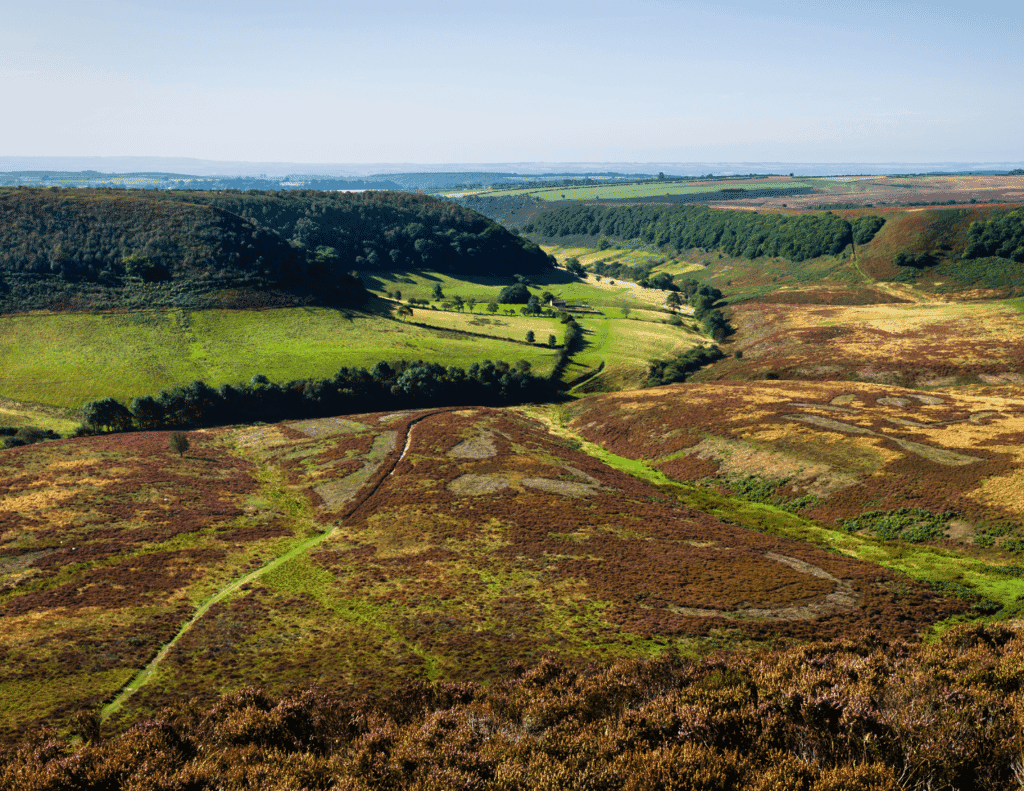
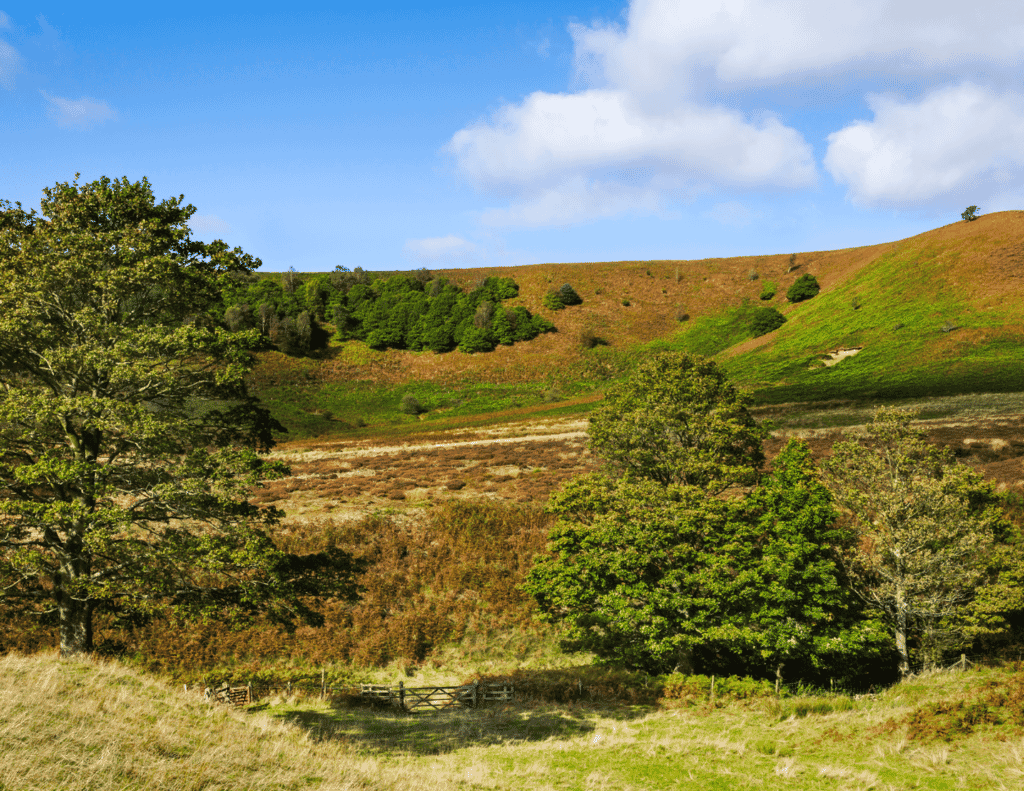

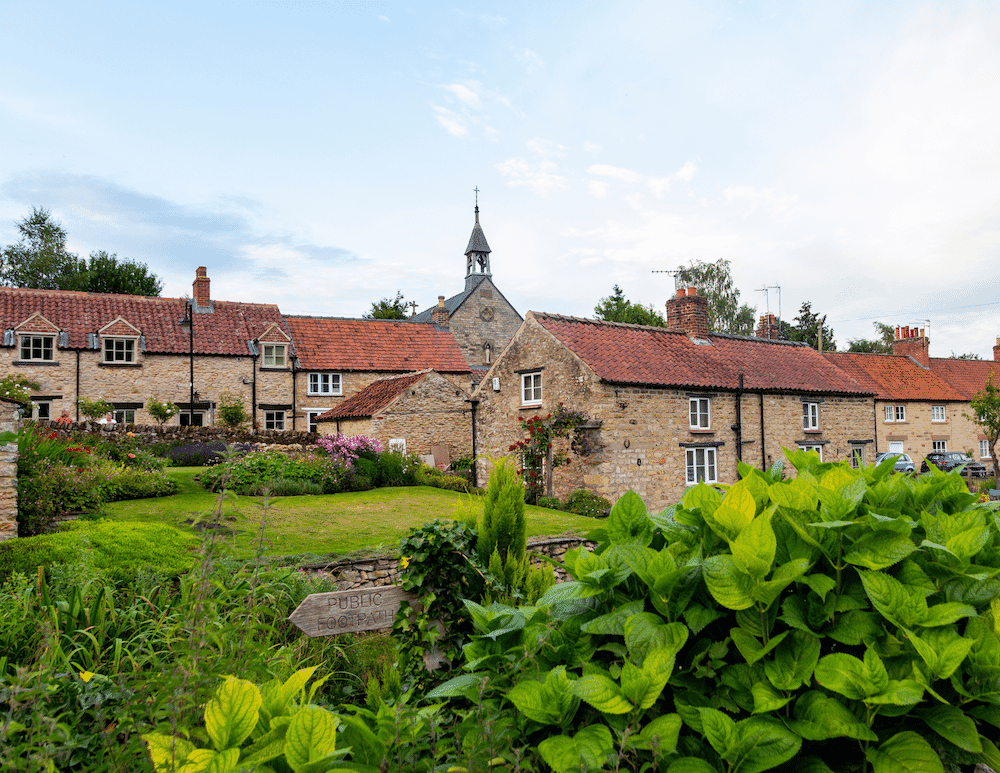













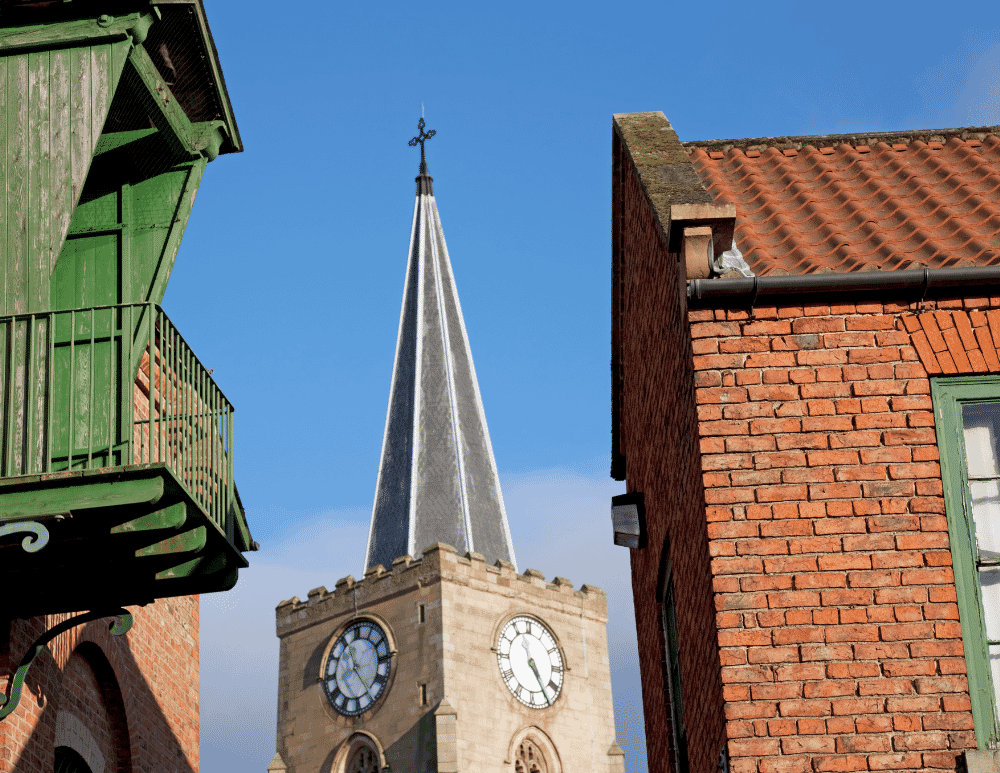








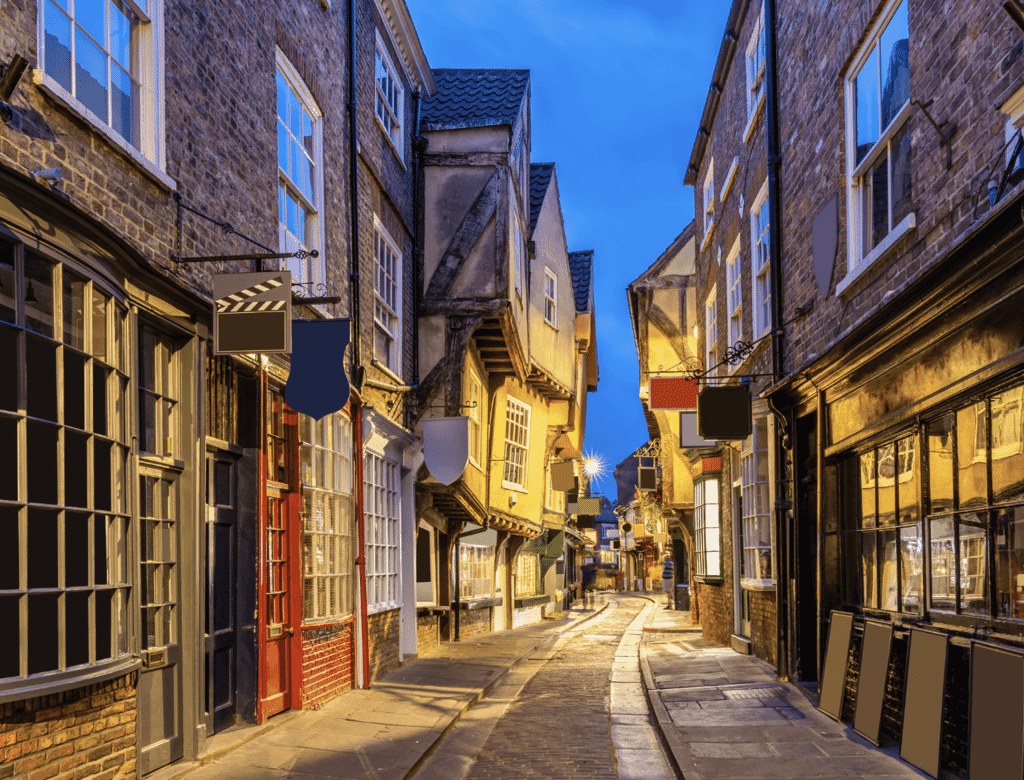





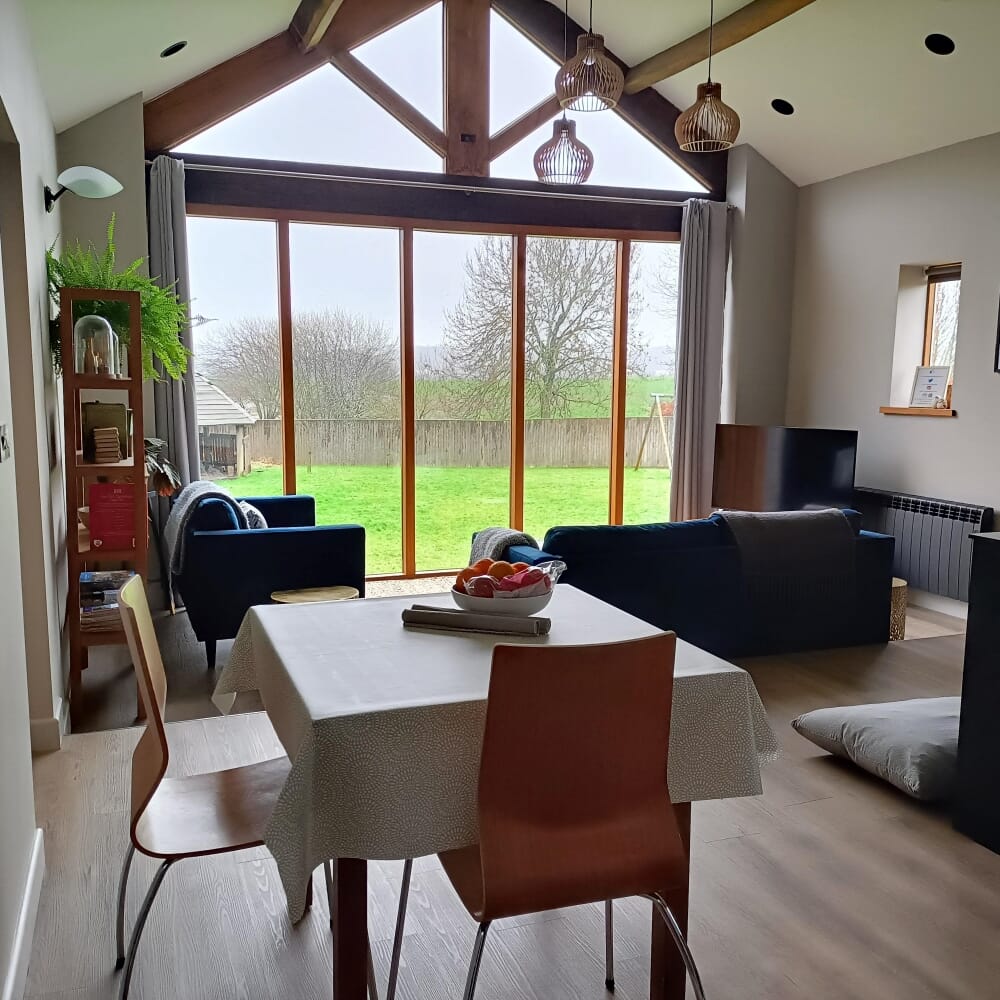



















Leave a Reply